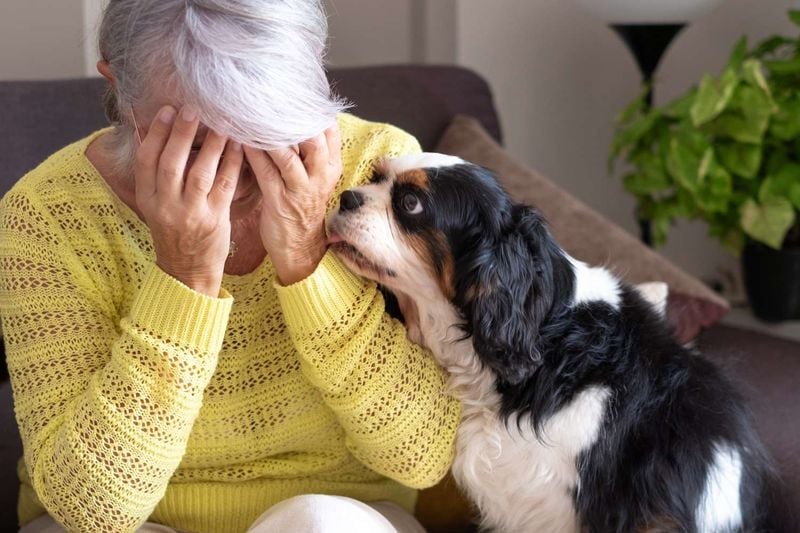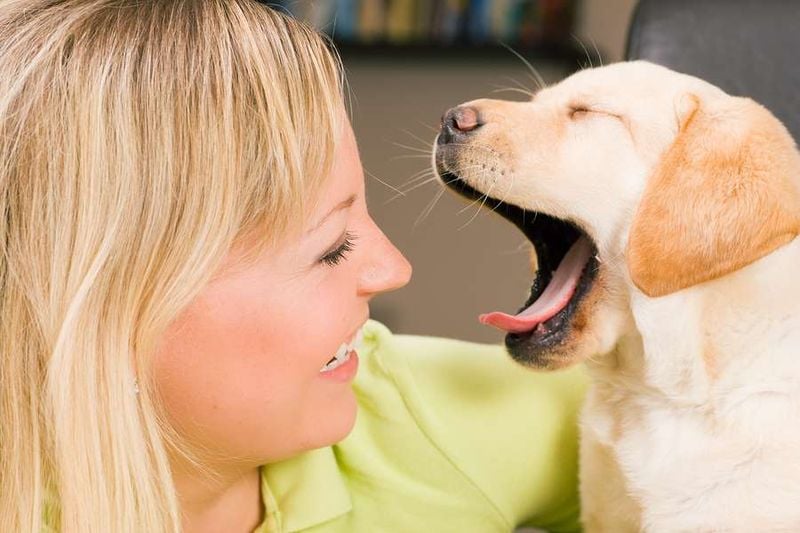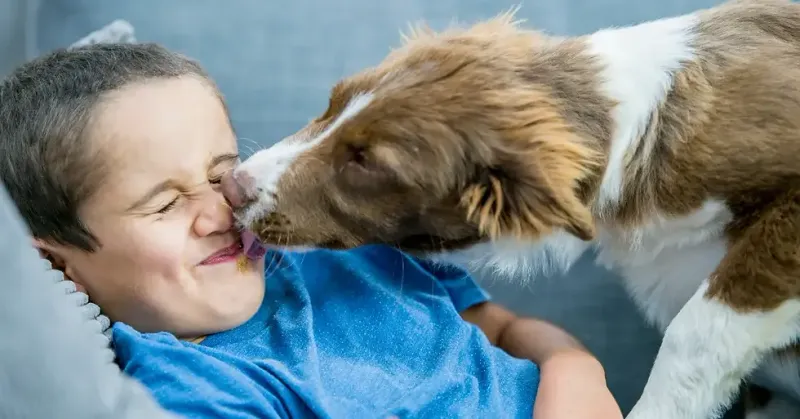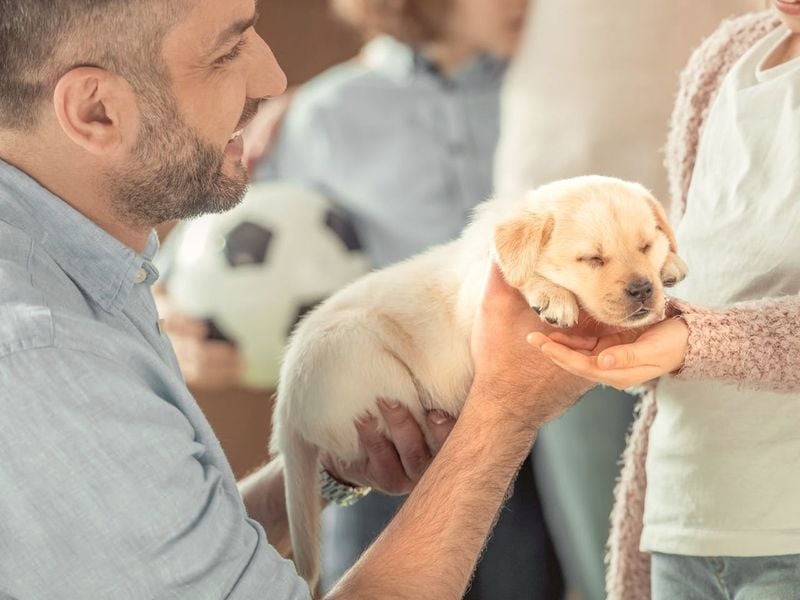12 Wild but True Dog Facts Only a Behavior Expert Could Tell You
Dogs have been our companions for thousands of years, yet they still surprise us with their complex behaviors and abilities.
Behind those wagging tails and puppy dog eyes lies a sophisticated communication system and emotional intelligence that rivals our own.
These fascinating canine behaviors go far beyond basic commands and tricks – they reveal just how deeply dogs understand and connect with humans.
1. Your Dog Smells Your Feelings
Dogs possess an extraordinary ability to detect chemical changes in human sweat and breath that occur during different emotional states. When you’re afraid, happy, or stressed, your body releases specific scents that your dog can identify immediately.
This olfactory superpower explains why your pup might become protective when you’re scared or join your celebration when you’re excited. Research shows dogs can distinguish between the smell of happy sweat versus fearful sweat with remarkable accuracy.
Next time your dog acts differently around you during emotional moments, they’re not just responding to your body language – they’re literally smelling your feelings!
2. Left Wag vs. Right Wag: It Matters
Not all tail wags communicate happiness! The direction of your dog’s tail wagging actually reveals different emotional states. A tail wagging more to the right generally indicates positive emotions like excitement or contentment when seeing someone familiar.
Wags that favor the left side often signal negative emotions such as uncertainty, anxiety, or perceiving a potential threat. This directional preference stems from different hemispheres of the brain controlling different emotional responses.
Scientists discovered this through careful observation of dogs meeting familiar humans versus strangers. Pay attention to which way your dog’s tail swings – it’s sharing emotional information you might otherwise miss!
3. Dogs Dream About Their Favorite Humans
Those twitching paws and little woofs during sleep aren’t random – your dog is likely dreaming about you! Dogs experience REM sleep just like humans do, complete with vivid dreams that replay their daily experiences.
Researchers at MIT discovered that dogs’ brain activity during sleep mirrors patterns seen during waking activities. When your pup’s legs move during sleep, they’re probably reliving a game of fetch or a walk with you.
The stronger your bond, the more likely you feature in their dreams. Those little sleep-barks? Possibly your furry friend dreaming about protecting you or playing your favorite game together!
4. Facial Expression Experts
Dogs evolved a unique ability among non-primates – they can read human facial expressions with remarkable accuracy. Studies show dogs can distinguish between happy, angry, and neutral human faces, even when shown only parts of the face.
When you smile, your dog recognizes it as positive. When you frown, they detect your displeasure. This skill developed specifically through domestication and thousands of years of human interaction.
Even more impressive, dogs look at the right side of human faces first – the side that more strongly displays emotions! This mirrors how humans process facial expressions, making dogs uniquely tuned to our emotional displays.
5. Contagious Yawns Show Empathy
Ever notice your dog yawns after you do? That’s not coincidence – it’s empathy in action! Dogs catch yawns from humans they’re emotionally connected to, just like we catch yawns from friends and family.
Research shows dogs are more likely to yawn after their owners yawn than after strangers do. This contagious yawning indicates dogs possess a form of emotional contagion – the building block of empathy.
Fascinating fact: puppies don’t develop this ability until around 7 months old, suggesting it’s tied to social development. Your dog’s copycat yawn is actually a heartwarming sign they’re emotionally attuned to you!
6. Praise Often Beats Food Rewards
Contrary to popular belief, many dogs prefer sincere praise over food treats! Neuroscience research using brain scans revealed that for many dogs, the reward center in their brains lights up more intensely when praised by their favorite human than when given food.
This preference varies between individual dogs. Some genuinely value your verbal approval and affection more than that tasty treat. The preference typically strengthens as the human-dog bond develops over time.
Working dogs especially respond to praise, explaining why verbal reinforcement works so effectively in training service animals. Your enthusiastic “Good dog!” might actually be more rewarding than that bacon bit!
7. Your Dog Has an Internal Clock
Dogs possess an uncanny ability to track time passing. Ever wonder how your dog knows exactly when you’re due home or when dinner should be served? They’re not checking watches – they’re using a combination of circadian rhythms, scent changes, and routine memory.
Studies show dogs anticipate their owners’ returns by tracking how long their scent has been diminishing in the home. They also recognize time patterns in daily routines with remarkable precision.
The longer you’re gone, the more intense the greeting when you return – not just because they missed you more, but because they genuinely perceive longer time periods differently than shorter absences!
8. Barks Have Specific Meanings
Dog barks aren’t just noise – they’re a sophisticated communication system with distinct meanings! Research shows dogs produce different acoustic patterns when alerting to danger versus expressing playfulness or frustration.
Short, sharp barks typically signal alarm or warning. Long, single barks often request attention or express loneliness. Rapid-fire barks with pauses usually indicate excitement or play invitation.
Humans can actually learn to distinguish these different barks with surprising accuracy. Even more fascinating, dogs adapt their barking style based on how effectively humans respond to certain sounds – they’re training us while we think we’re training them!
9. Licking Serves Multiple Purposes
When your dog licks you, they might be expressing several different emotions or needs simultaneously. Most commonly, licking is a sign of affection – the canine equivalent of a kiss – stemming from puppy behavior when mothers lick their young.
Licking also releases endorphins in dogs, creating a calming effect when they’re anxious. Notice excessive licking during thunderstorms? That’s self-soothing behavior.
In some contexts, licking represents a submissive gesture, acknowledging you as the leader. The context matters tremendously – a greeting lick differs from persistent licking during stressful situations. Your dog’s tongue is essentially a multi-purpose communication tool!
10. Body Language Speaks Volumes
Dogs communicate primarily through an intricate body language system that’s far more sophisticated than their barks. A slight ear position change, tail height adjustment, or weight shift tells an entire story to other dogs – and to humans who learn to read these signals.
The combination of ear position, tail carriage, eye contact, and body posture creates a vocabulary of hundreds of distinct messages. A wagging tail with tense body and hard stare signals very different intentions than the same wag with relaxed posture.
Most fascinating: dogs developed specialized signals purely for interacting with humans that they never use with other dogs, like the head-tilt that captures our attention so effectively!
11. Emotional Sponges Absorb Your Stress
Dogs synchronize their stress hormones with their owners, literally absorbing your emotional state. Studies measuring cortisol levels in both dogs and owners show remarkable correlation – when your stress hormones rise, your dog’s follow suit.
This emotional mirroring explains why anxious owners often have anxious dogs. The connection is so strong that therapy dogs working with trauma victims require special breaks to prevent absorbing too much emotional distress.
Your calm presence genuinely helps your dog feel secure, while your anxiety can trigger their own stress response. This biological empathy creates a feedback loop where calm owners tend to have calmer dogs, regardless of breed tendencies.
12. The Critical First 16 Weeks
A puppy’s experiences during their first 16 weeks fundamentally shape their adult personality and behavior patterns. This critical socialization window represents a unique developmental period when puppies form their understanding of what’s normal and safe in the world.
Positive exposure to different people, animals, environments, and sounds during this period creates a confident, adaptable adult dog. Missing these exposures can lead to lifelong fears and behavioral issues that are difficult to overcome later.
The neurological basis for this window involves rapid brain development and neural pathway formation. A well-socialized puppy might encounter 100+ different people and numerous environments before reaching four months old!


















